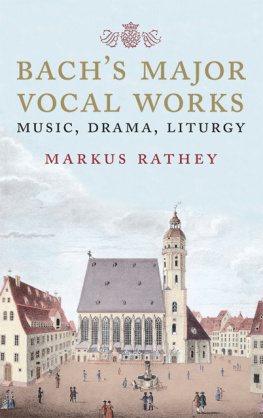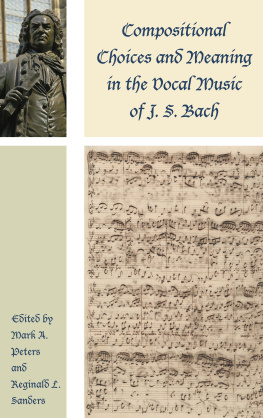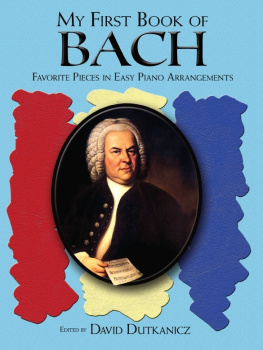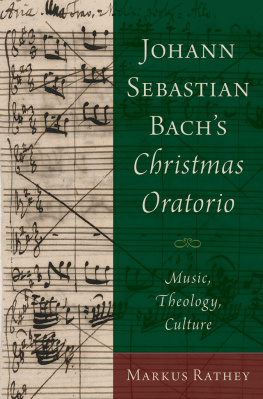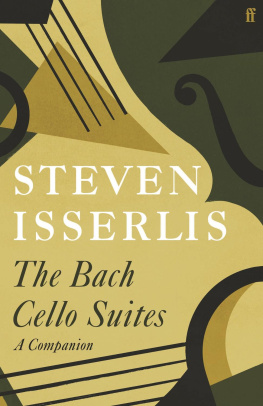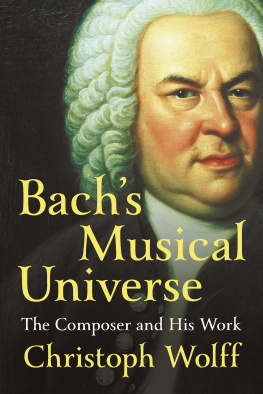Bach Johann Sebastian - Bachs Cello Suites, Volumes 1 and 2: Analyses and Explorations
Here you can read online Bach Johann Sebastian - Bachs Cello Suites, Volumes 1 and 2: Analyses and Explorations full text of the book (entire story) in english for free. Download pdf and epub, get meaning, cover and reviews about this ebook. City: Bloomington, year: 2007, publisher: Indiana University Press, genre: Home and family. Description of the work, (preface) as well as reviews are available. Best literature library LitArk.com created for fans of good reading and offers a wide selection of genres:
Romance novel
Science fiction
Adventure
Detective
Science
History
Home and family
Prose
Art
Politics
Computer
Non-fiction
Religion
Business
Children
Humor
Choose a favorite category and find really read worthwhile books. Enjoy immersion in the world of imagination, feel the emotions of the characters or learn something new for yourself, make an fascinating discovery.

- Book:Bachs Cello Suites, Volumes 1 and 2: Analyses and Explorations
- Author:
- Publisher:Indiana University Press
- Genre:
- Year:2007
- City:Bloomington
- Rating:5 / 5
- Favourites:Add to favourites
- Your mark:
- 100
- 1
- 2
- 3
- 4
- 5
Bachs Cello Suites, Volumes 1 and 2: Analyses and Explorations: summary, description and annotation
We offer to read an annotation, description, summary or preface (depends on what the author of the book "Bachs Cello Suites, Volumes 1 and 2: Analyses and Explorations" wrote himself). If you haven't found the necessary information about the book — write in the comments, we will try to find it.
Bach Johann Sebastian: author's other books
Who wrote Bachs Cello Suites, Volumes 1 and 2: Analyses and Explorations? Find out the surname, the name of the author of the book and a list of all author's works by series.
Bachs Cello Suites, Volumes 1 and 2: Analyses and Explorations — read online for free the complete book (whole text) full work
Below is the text of the book, divided by pages. System saving the place of the last page read, allows you to conveniently read the book "Bachs Cello Suites, Volumes 1 and 2: Analyses and Explorations" online for free, without having to search again every time where you left off. Put a bookmark, and you can go to the page where you finished reading at any time.
Font size:
Interval:
Bookmark:
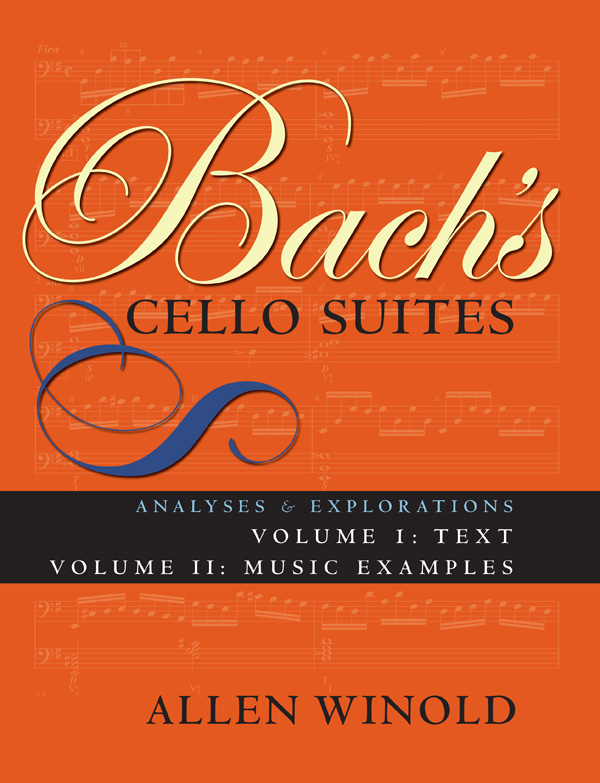
BACHS
CELLO SUITES

CELLO SUITES
Analyses and Explorations
Volume I: Text
ALLEN WINOLD
Indiana
University
Press
BLOOMINGTON AND INDIANAPOLIS
This book is a publication of
Indiana University Press
601 North Morton Street
Bloomington, IN 47404-3797 USA
http://iupress.indiana.edu
Telephone orders 800-842-6796
Fax orders 812-855-7931
Orders by e-mail
2007 by Allen Winold
All rights reserved
No part of this book may be reproduced or utilized in any form or by any means, electronic or mechanical, including photocopying and recording, or by any information storage and retrieval system, without permission in writing from the publisher. The Association of American University Presses Resolution on Permissions constitutes the only exception to this prohibition.
The paper used in this publication meets the minimum requirements of American National Standard for Information SciencesPermanence of Paper for Printed Library Materials, ANSI Z39.48-1984.
MANUFACTURED IN THE UNITED STATES OF AMERICA
Library of Congress Cataloging-in-Publication Data
Winold, Allen.
Bachs cello suites : analyses and explorations, volume i : text / Allen Winold.
p. cm.
Includes bibliographical references (p.) and index.
ISBN 978-0-253-21885-8 (pbk. : alk. paper)
1. Bach, Johann Sebastian, 16851750. Suites, violoncello, BWV 10071012.
2. Suites (Violoncello)Analysis, appreciation. I. Title.
MT145.B14W57 2007
787.41858092dc22
2007000628
1 2 3 4 5 12 11 10 09 08 07
To Helga with love, and with deep gratitude
for her insight and inspiration
Johann Sebastian Bachs Suites for Unaccompanied Cello have inspired listeners and performers for almost 300 years, and yet there has been no full-length analytical study devoted exclusively to these magnificent works. My first goal in writing this book was to fill this gap by presenting analyses of all the movements of the suites; my second goal was to involve readers actively in the explorations of these works.
I wrote the book for three groups of readers with varied but related interests. I wrote it for cellists and other performing musicians, not to insist that they follow my ideas on how to interpret, perform, and teach these works, but rather to show them how concepts from music analysis could help them form their own ideas on interpreting, performing, and teaching these works. I wrote it for music teachers and for advanced students, not to challenge them with new theories, but to help them explore ways in which traditional analytical techniques and ideas could be made more accessible and meaningful. I wrote it for interested and informed general readers and music listeners, not to give them a superficial survey of the Cello Suites, but to introduce them to the excitement that can come from delving deeply into the study of these works.
To meet these goals and serve these readers, I use analytical techniques from a variety of sources, and I adapt and simplify some of the concepts and techniques to make them easier to understand and apply. All analyses include a set of basic techniquesformal analysis, harmonic reduction, functional harmonic analysis, linear analysis, and melodic analysis. Other specialized analytical techniques are introduced in the analyses of individual movements. The basic analytical concepts used throughout the book are presented in the first two sections of in conjunction with the study of the Preludes and Allemandes of the First and Second Suites. Readers who wish to focus only on the movements of a single suite should read these sections before reading the discussions of the movements of that particular suite.
The organization of the study reflects an emphasis on active involvement on the part of the reader. performance, and pedagogy. A detailed table of contents at the end of volume 1 enables readers to find discussions of specific movements and explanations of specific analytical concepts.
To foster active involvement, the book is presented in two volumesthe first containing the text, the second containing the music examples and analyses. This produces a more readable format for the examples, makes it easier for readers to go back and forth easily between text and music, and facilitates the playing of the examples on cello, piano, or other instruments. The music examples include the complete cello part of all movements of the suites, so that it is not necessary to have a separate copy of the music for the suites while reading the book. Both volumes end with an appendix that presents a summary of analytical designations, symbols, and abbreviations.
I hope that readers, especially theorists, musicologists, and music educators, will play the examples in the second volume, and not just focus on the analytical discussions in the first volume. I hope that readers, especially performers and students, will study the analytical concepts in the first volume, and not just focus on the music examples in the second volume. In this way all readers may experience the fruitful interaction between the analysis of music, with its emphasis on thoughtful exploration of possibilities, and the practice of music, with its emphasis on active realization of these possibilities.
I acknowledge my indebtedness to my colleagues at the Indiana University Jacobs School of Music and to other scholars and writers from Bachs own time to the present, whose insights have helped me to understand and value the Cello Suites. I acknowledge my appreciation to Janos Starker, Helga Winold, Tsuyoshi Tsutsumi, and Emilio Colon from the cello department at the Jacobs School of Music and to the many generations of cellists whose performances of these works have brought them to the world in such a rich variety of styles and interpretations. I especially want to acknowledge the skill, support, patience, and encouragement of Michele Bird, Dawn Ollila, Jane Quinet, Pam Rude, and Donna Wilson of Indiana University Press, and copyeditor Eric Schramm.
Finally I acknowledge my gratitude to my teachers who helped me find the knowledge to answer my questions, and to my students who helped me find the courage to question my answers.
BACHS
CELLO SUITES
History is philosophy teaching by examples.
Henry St. John, Viscount Bolingbrooke
When, in 1735, Viscount Bolingbrooke wrote this perceptive definition of history, he was probably referring to significant social or political events as the examples that bring philosophical insight. There is no reason, however, why the composition and performance of works such as J. S. Bachs Cello Suites, written roughly a decade earlier, could not serve equally well. In this spirit I present some of the historical events related to the Cello Suites, not as mere facts, but as examples that may provide insight into the composition, analysis, and performance of these works.
In the same year in which Bolingbroke wrote this definition of history, Bach wrote a genealogy entitled The Origin of the Musical Bach Family; in 1774 his son Carl Philipp Emanuel Bach and others added supplemental materials. This genealogy lists fifty-three members of the Bach family, from Veit Bach, a Hungarian baker who played the cittern, to Johann Heinrich Bach, a good clavier player. The members of the Bach family were well established as musicians in Thuringia and other parts of Germany; indeed, the name Bach was virtually synonymous with the word musician. Here is Bachs own listing of the positions he held up until 1735:
Font size:
Interval:
Bookmark:
Similar books «Bachs Cello Suites, Volumes 1 and 2: Analyses and Explorations»
Look at similar books to Bachs Cello Suites, Volumes 1 and 2: Analyses and Explorations. We have selected literature similar in name and meaning in the hope of providing readers with more options to find new, interesting, not yet read works.
Discussion, reviews of the book Bachs Cello Suites, Volumes 1 and 2: Analyses and Explorations and just readers' own opinions. Leave your comments, write what you think about the work, its meaning or the main characters. Specify what exactly you liked and what you didn't like, and why you think so.


